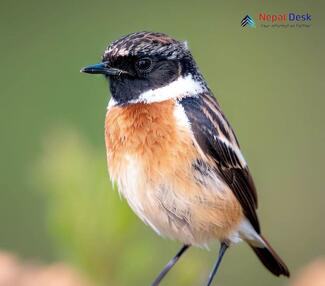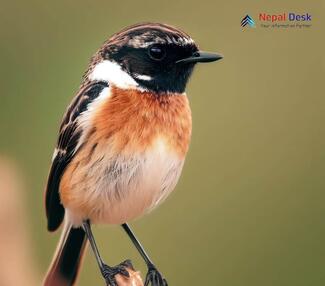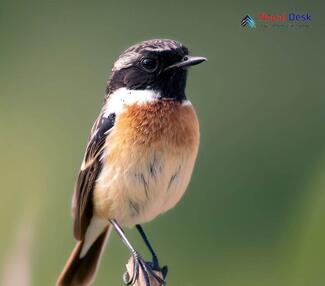The beauty of nature is often perfectly captured in its vast array of unique bird species. The White-tailed Stonechat is one such species that never fails to captivate the curiosity of birdwatchers and nature enthusiasts. In this article, we will take a closer look at the taxonomy, physical features, habitat, diet, breeding, and nesting of this incredible bird. We will also explore some fun facts related to it and delve into its availability in the fascinating region of Nepal.
Taxonomy and Physical Features
The scientific name for White-tailed Stonechat is Saxicola leucurus. It belongs to the family Muscicapidae and ranks under the Saxicola genus. At first glance, this small passerine bird is recognized by its black head with a patch of white around its neck and a striking white rump. Males often have more pronounced features than females, who appear duller in comparison with darker neck patches.
Habitat and Diet
The White-tailed Stonechat thrives in open grasslands, agricultural fields, and wetlands with scattered shrubs or tall grasses. Their range extends from northeastern India to Bangladesh, Bhutan, Nepal, central Myanmar (Burma), and China. Easily blending into these landscapes while perched atop vegetation or fluttering through bushes, these birds are well-adapted to their surroundings.
Feeding primarily on insects and small invertebrates, White-tailed Stonechats employ a "sit-and-wait" hunting strategy as they perch on tall shrubs or grasses to spot potential prey before swooping in for the catch. Crickets, beetles, grasshoppers, and spiders form a major part of their diet.
Breeding and Nesting
Breeding season for White-tailed Stonechats occurs between April and July. During this period, males will engage in a beautiful display of aerial movements accompanied by distinctive calls to attract prospective mates. Once a pair has been established, the two birds construct their nest close to the ground in patches of tall grass or bushes. The nest is crafted from twigs and roots lined with finer grasses, typically forming a cup shape. Females lay a clutch of 3-5 eggs and incubate them for about two weeks.
Fun Facts:
Did you know that both parents partake in feeding their young? This cooperative behavior ensures that the fledglings receive adequate nourishment crucial for their development. Also, the White-tailed Stonechat got its name from its sharp "chat" call that resembles stones knocking together.
Availability in Nepal
Nepal's diverse terrain plays host to an incredible variety of bird species, including the White-tailed Stonechat. They are most commonly spotted in lowland areas such as the Terai region where grasslands, wetlands, and agricultural fields provide optimal habitat conditions.
In conclusion, the White-tailed Stonechat is an eye-catching bird species whose dazzling features and unique characteristics set it apart. A perfect example of nature's complexity and beauty, every sighting of this enchanting creature brings delight to those who chance upon it - especially in the captivating landscapes of Nepal.




